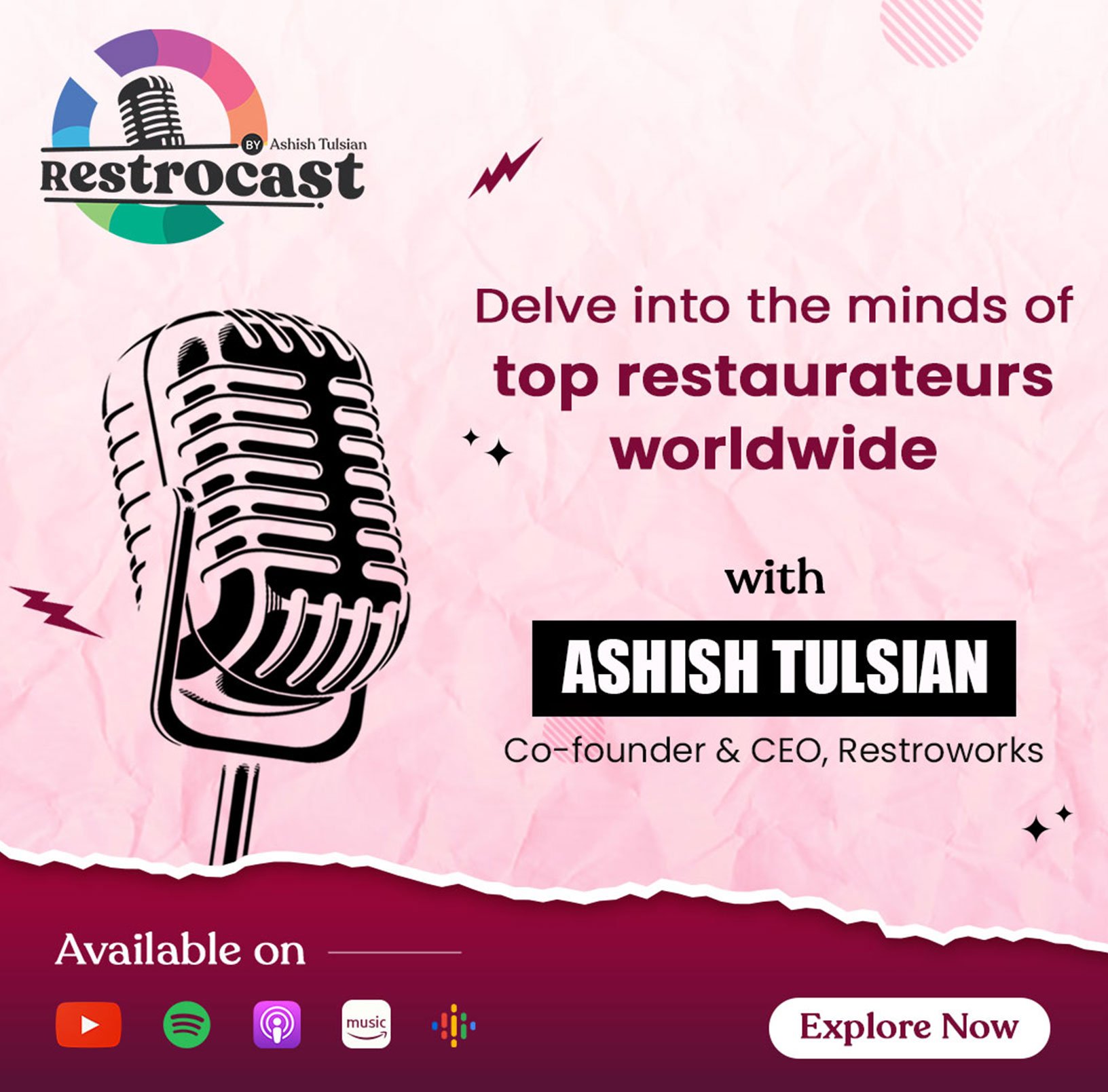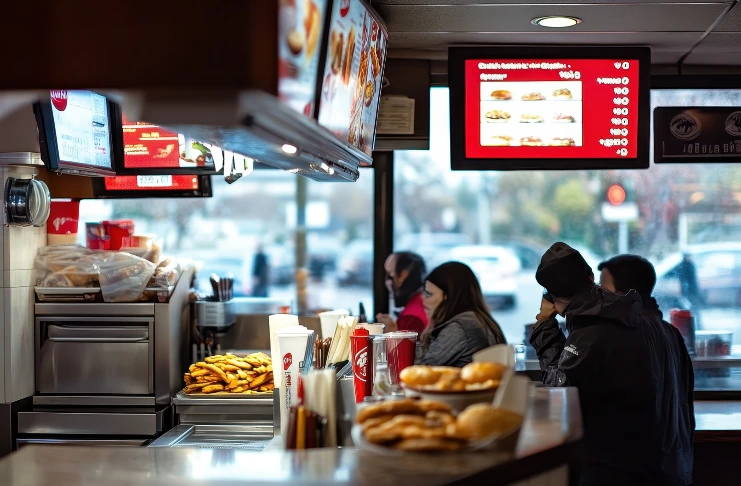
Table of Contents
ToggleIn the fast-paced world of modern India, dining habits have seen a dramatic shift. With busy work schedules, rising disposable incomes, and increased urbanization, the demand for convenient, affordable, and tasty food has never been higher. QSRs have become a staple in the Indian dining experience. From global fast food chains to innovative Indian startups, the QSR space is buzzing with opportunity.
A quick service restaurant (QSR) is a food outlet that offers fast, efficient service with a limited menu of popular items, such as burgers, pizzas, wraps, and beverages. These restaurants prioritize speed, affordability, and convenience, making them ideal for India’s fast-paced urban lifestyle. In recent years, QSRs have gained immense popularity across metros and Tier 2/3 cities.
Whether it’s grabbing a burger on the go or ordering a biryani bowl from a delivery app, these outlets have transformed India’s food landscape. In this blog, we explore the growth of QSRs in India, the trends driving their expansion, and the top brands shaping the future.
Overview of the QSR Industry in India
The QSR industry in India has witnessed phenomenal growth over the past decade. What began with a handful of global brands has now exploded into a vibrant ecosystem of local, international, and tech-powered food ventures. According to industry reports, India’s QSR market is expected to reach ₹43.5 billion by 2030, growing at a CAGR of over 9.36%.
This boom has been driven by rising urbanization, a youthful population, and the exponential growth of home delivery services. The affordability and accessibility of fast food chains have made them a go-to choice for both metro and Tier 2/3 city consumers.
While global giants like Domino’s, McDonald’s, and KFC dominate the landscape, Indian brands like Wow! Momo, Biryani Blues, and Faasos are rapidly scaling, with tech-first operations and innovative menu items.
Key Market Trends Shaping QSR Growth in India
a. Digital Ordering & Delivery-First Model
The rise of home delivery platforms like Zomato, Swiggy, and Blinkit has drastically changed how QSRs operate. Consumers now expect seamless ordering, live tracking, and contactless delivery. Many QSRs are shifting to a delivery-first model, optimizing kitchens and packaging for food in transit.
b. Demand for Limited Menus & Specialization
Modern consumers prefer brands that specialize. A limited menu not only improves operational efficiency but also helps maintain consistency and quality. This trend is especially evident in niche burger chains, momo-only brands, and those specializing in desserts or biryanis.
c. Rise of Indian Fast Casual Brands
The line between QSR and fast casual is becoming increasingly blurred. Fast casual brands combine affordability with a slightly more premium experience, offering better ambiance, healthier ingredients, or freshly prepared food. Brands like The Belgian Waffle Co. and Chai Point exemplify this shift.
d. Expansion into Tier 2 & Tier 3 Cities
QSRs are no longer confined to metros. With rising aspirations and increasing digital penetration, smaller cities are emerging as growth hubs for QSR expansion. Both international fast food chains and local brands are aggressively expanding their presence in these regions.
e. Sustainability & Health-Conscious Eating
Millennial and Gen Z consumers are more health-conscious and environmentally aware. As a result, QSRs are introducing vegan, gluten-free, and healthy menu items, while also investing in eco-friendly packaging.
f. Post-Pandemic Era
Following the pandemic, contactless experiences like self-order kiosks, QR code menus, and digital payments have become standard. These innovations enhance customer safety and streamline operations.
g. Social Media Influence
Food influencers and Instagram-worthy dishes play a big role in shaping consumer choices. QSRs are investing in visual branding and viral campaigns to attract younger audiences.
Growth Drivers of the Indian QSR Industry
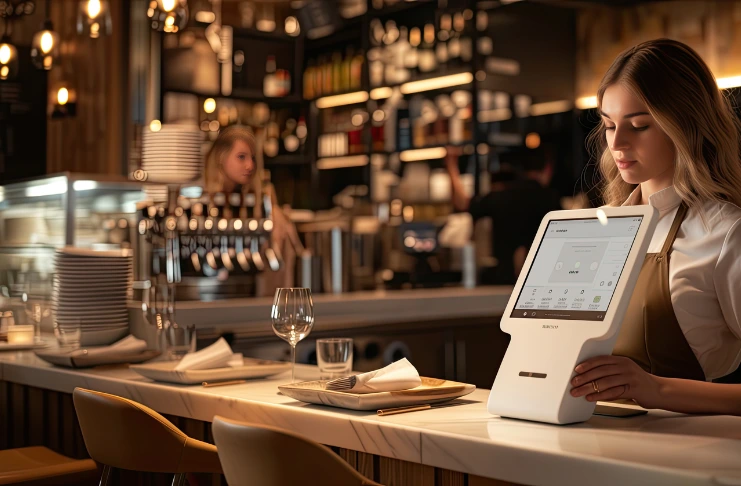
1. Changing Lifestyles and Eating Habits
The fast-paced lifestyle in Indian cities is driving consumers toward quick, tasty meals. The average working professional or student prefers a quick bite at a fast food chain or a takeaway meal from a quick service restaurant rather than spending time cooking. Key factors driving this shift:
- Increased nuclear families and working couples
- Rise in on-the-go consumption and takeaway culture
- A preference for standardized, hygienic meals over street food
2. Rise of Online Aggregators and Tech Adoption
With the rise of food tech, QSRs now rely heavily on integrated POS systems, digital menus, and cloud kitchens. Technology also enables QSR owners to analyze customer data, track sales in real-time, and personalize promotions. Technology innovations fueling growth:
- Integrated POS systems and cloud-based inventory tracking
- Real-time analytics for performance monitoring
- AI-driven upselling and customer personalization
- Digital menus and automated ordering kiosks
3. Franchising Model and Low Entry Barriers
One of the key enablers for growth is the franchising model. From large burger chains to local snack brands, franchising allows rapid scale with low capital. Many new-age entrepreneurs are investing in QSRs with a clear business plan, tech-backed systems, and limited staffing needs. Why franchising works for QSR growth:
- Proven business model with established branding
- Centralized supply chain and training systems
- Lower investment and operational complexity
- Scalable infrastructure supported by tech
4. Young Demographics & Urbanization
India’s youthful population is more open to dining out, trying new cuisines, and spending on experiences. This cohort is a prime driver for both fast casual dining and home delivery growth. Impact of youth and urbanization on QSRs:
- High brand affinity for global and homegrown QSRs
- Willingness to try diverse cuisines and menu items
- Strong preference for fast casual dining and digital experiences
- Lifestyle centered around malls, cinemas, and cafes
Top QSR Brands in India (2025)
a. Global Giants Dominating India’s QSR Scene
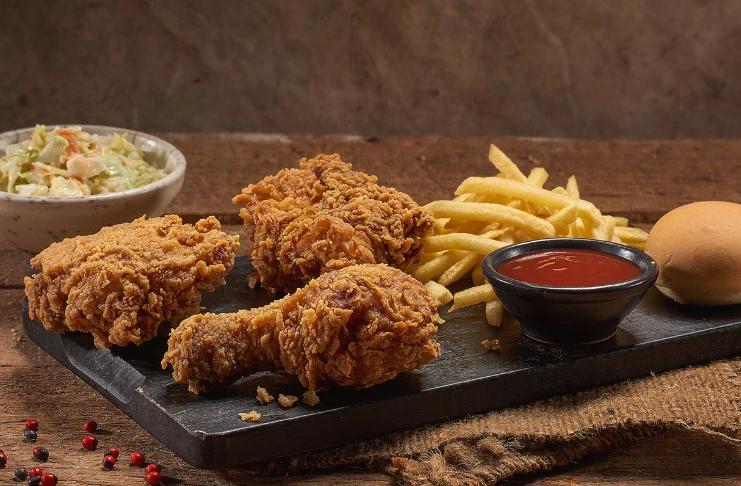
1. Pizza Hut
Pizza Hut, a subsidiary of Yum! Brands has a significant presence in India’s quick service restaurant market. Known for its pan pizzas, pasta, and garlic bread, Pizza Hut appeals to both dine-in and home delivery customers.
- Position in India: Operated primarily by Devyani International.
- Strengths: Strong brand recall, extensive reach in metros and Tier 2 cities.
- Adaptation: Offers a vegetarian and spicy Indian menu, including Tandoori Paneer Pizza, to suit local tastes.
2. Domino’s
Domino’s Pizza is the undisputed leader among fast food chains in India’s QSR space. It has the largest number of outlets nationwide and has set industry standards for home delivery efficiency.
- Position in India: Operated by Jubilant FoodWorks.
- Strengths: Quick service, robust tech integration (app, website), and high order accuracy.
- Adaptation: Menu includes Paneer Makhani Pizza, Chicken Keema Do Pyaza, and more.
3. KFC
KFC, also part of Yum! Brands is a dominant QSR known for its fried chicken. It enjoys massive popularity among India’s youth and working-class consumers.
- Position in India: Operated by Devyani International and Sapphire Foods.
- Strengths: Signature chicken buckets, Zinger Burgers, and rice bowls.
- Adaptation: Includes vegetarian offerings, such as Veg Zinger, to cater to Indian preferences.
4. Subway
Subway is positioned as a healthier alternative among global quick-service restaurants, offering customizable menu items with fresh vegetables, meats, and sauces.
- Position in India: Operated via master franchisees and sub-franchisees.
- Strengths: Customization, transparency in ingredients, and perceived health value.
- Adaptation: Includes paneer tikka subs and eggless sauces to align with Indian dietary needs.
5. Burger King
Burger King entered India in 2014 and quickly established itself as a popular burger chain. It has grown aggressively, focusing on affordability and competitive pricing.
- Position in India: Operated by Restaurant Brands Asia Limited.
- Strengths: Whopper variants, value combo meals, and frequent promotions.
- Adaptation: Large vegetarian menu, including the Paneer Royale and Veg Whopper.
b. Indian QSR Success Stories
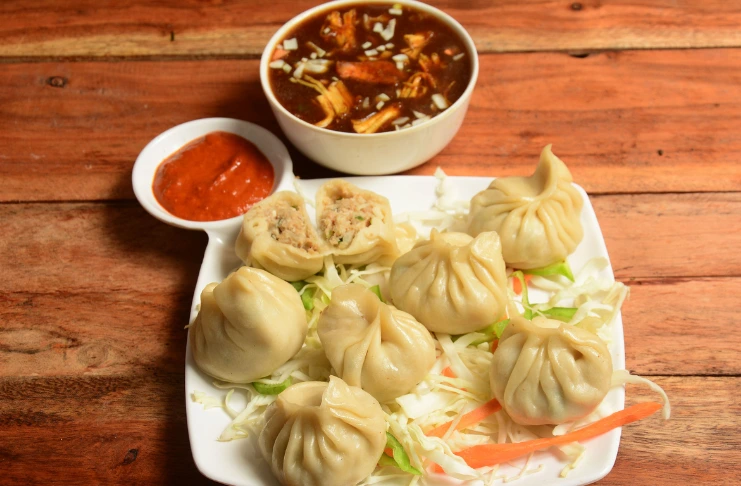
1. Wow! Momo
Wow! Momo built its brand around a single product, momos, offering a limited menu that ensured consistency and speed. Its innovative variations, strong branding, and scalable operations helped it become one of India’s fastest-growing quick service restaurant chains, expanding across malls, high streets, and delivery platforms.
2. Faasos (Rebel Foods)
Faasos, under Rebel Foods, pioneered the cloud kitchen model in India, operating multiple virtual brands from shared kitchens. Focused on online ordering and home delivery, the brand uses data analytics to optimize menu items, locations, and promotions, making it a dominant player in India’s tech-driven QSR ecosystem.
3. Biryani Blues
Biryani Blues turned India’s beloved rice dish into a scalable QSR format. With a business plan centered on standardizing regional flavors, it offers authentic biryani with sides and beverages. A strong focus on branding, dine-in, and home delivery has helped it grow steadily across metro and Tier 2 cities.
4. Goli Vada Pav
Goli Vada Pav turned Mumbai’s iconic street snack into a national QSR brand. By offering hygienic, standardized vada pavs via a franchise model, it brought innovation to Indian street food. Its limited menu, strong supply chain, and efficient outlet formats enabled quick scale, especially in smaller towns.
5. Chai Point
Chai Point capitalized on India’s massive tea-drinking population, creating a fast-casual brand that blends the charm of a café with QSR efficiency. With clean outlets, tech-enabled ordering, and delivery in eco-friendly packaging, it appeals to urban professionals seeking quality beverages and light bites with consistent service.
c. Emerging Brands to Watch
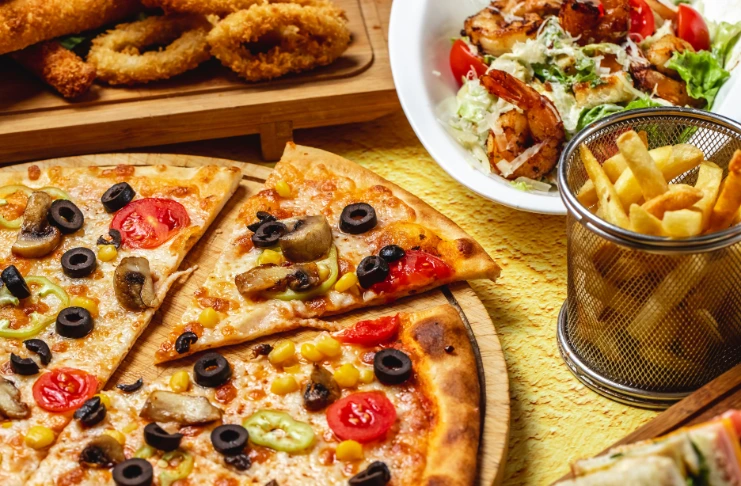
1. The Belgian Waffle Co.
Founded in 2015, The Belgian Waffle Co. offers freshly baked, eggless Belgian waffle sandwiches in over 450 outlets across 160+ Indian cities. Known for its creamy fillings and on‑the‑go format, it has earned awards like “Franchisor of the Year” and expanded into retail mixes.
2. Mojo Pizza
Mojo Pizza is a cloud‑kitchen pizza startup founded in 2017, boasting 120+ kitchens across Mumbai, Bengaluru, Pune, and Gurugram. It differentiates itself by offering pizzas overloaded with toppings and speedy delivery under 30 minutes to over a million customers.
3. ZAZA Biryani
ZAZA Biryani is a growing brand specializing in regional biryani varieties: Hyderabadi, Lucknowi, Awadhi, packaged in quirky DIY kits and served via cloud kitchens. It offers affordable, heritage-inspired biryanis with curated side dishes, targeting young professionals and biryani lovers who seek convenience and authenticity.
4. Oven Story
Oven Story, launched by Rebound Foods, is a fast‑casual pizza and pasta chain combining gourmet flavors with quick delivery. Known for wood-fired pizzas and customizable flatbreads, it operates both dine‑in and cloud kitchens, appealing to urban diners seeking artisanal food without the fine‑dining price tag.
5. Biggies Burger
Biggies Burger is a Mumbai‑based gourmet burger brand offering beef, lamb, and chicken sliders with bold flavors and fresh ingredients. Operating primarily via cloud kitchens, it focuses on indulgent menu items, value combos, and social media engagement, targeting millennials eager for premium burger experiences.
INDUSTRY INSIGHT
In 2024, the bakery segment led India’s QSR market with an 18% share, driven by strong consumer demand for cakes, pastries, and cookies.
Meanwhile, the pizza segment experienced rapid growth, recording a projected 11% CAGR (2024–2029).
This surge was fueled by the aggressive expansion of international fast food chains and robust home delivery infrastructure, positioning pizza as one of the most dynamic categories in the Indian quick service restaurant industry.
How To Start A Quick-Service Restaurant
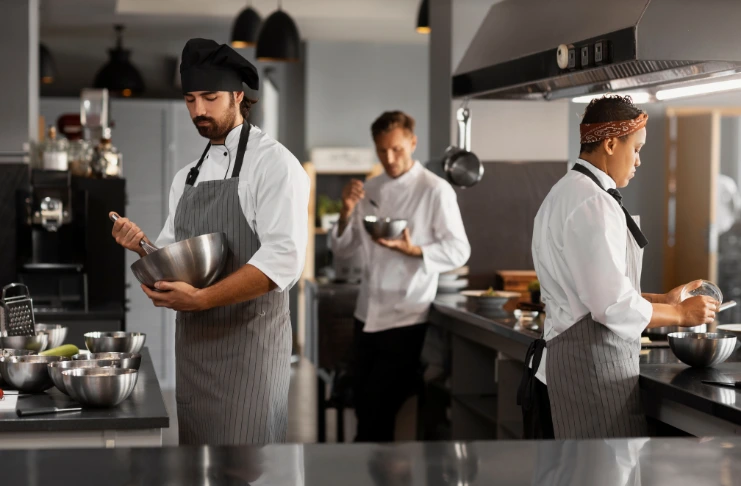
Step 1: Conduct Market Research
Understand your target audience, competition, and location viability. Analyze what type of menu items will appeal to your audience.
Step 2: Create a Solid Business Plan
Your business plan should include your brand concept, menu, pricing strategy, operating model (franchise vs. own), budget, and ROI expectations.
Step 3: Choose a Location or Cloud Model
Decide if you’ll operate from a physical location or a cloud kitchen setup optimized for home delivery.
Step 4: Obtain Licenses & Registrations
Ensure you have an FSSAI license, GST registration, and local health and fire department approvals.
Step 5: Set Up the Kitchen and Hire Staff
Invest in reliable kitchen equipment to ensure efficiency. To address labor shortages, modern QSRs automate repetitive tasks and simplify job roles, reducing dependency on large staff teams.
Step 6: Promote Your Brand
Build visibility through social media campaigns, influencer partnerships, and presence on food delivery apps. Launch promotions like discounts or combos to attract first-time customers and build initial traction.
Types Of Quick Service Restaurants
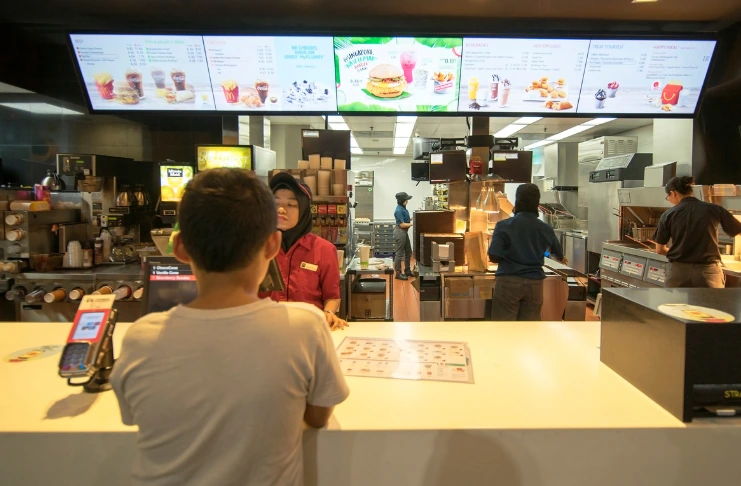
1. Standalone QSRs
Independent outlets located in high-traffic areas, offering a limited menu, quick service, and basic seating or takeaway options. Example: Goli Vada Pav
2. Food Court Kiosks
Compact counters inside malls or transit hubs, designed for grab-and-go meals with efficient prep and minimal seating. Example: The Belgian Waffle Co.
3. Cloud Kitchens
Delivery-only kitchens with no physical storefront, optimized for online orders via food delivery platforms. Example: Faasos, Behrouz Biryani.
4. Drive-Thrus
Customer stays in the vehicle while ordering and collecting food, focusing on speed and convenience. Example: McDonald’s, KFC
5. Fast Casual Dining
Blends QSR speed with better ambiance, quality ingredients, and slightly premium pricing, offering dine-in and takeaway. Example: Chai Point
Franchise Opportunities in the Indian QSR Space
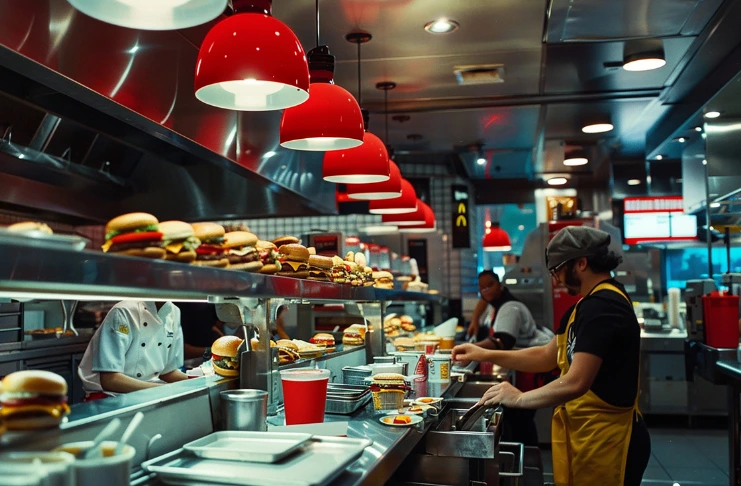
Franchising has become one of the most popular routes for expansion in the Indian quick-service restaurant space. It offers a win-win model: brands grow their footprint with minimal capital, while entrepreneurs enter the food business with an established name, proven systems, and ongoing support. The plug-and-play nature of QSR operations, limited menu, standardized processes, and lower space requirements make franchising especially attractive.
In India, QSR franchises range from low-cost setups like Goli Vada Pav or The Belgian Waffle Co., which require smaller investments and operate in kiosks or compact outlets, to premium franchises like McDonald’s or Domino’s, which demand higher capital but also offer greater scalability, brand value, and revenue potential.
Before investing in a QSR franchise, consider the following:
- Brand reputation and customer loyalty
- Initial investment and ROI timelines
- Ongoing royalty fees and marketing contributions
- Location selection and area exclusivity
- Training, technology, and operational support offered by the franchisor
- How the brand is adapting to trends like home delivery, automation, and tech integration
The Future of QSRs in India
1. Automation and Robotics
QSRs are increasingly using automation to streamline operations and reduce human dependency, particularly in response to the ongoing labor shortage. From robotic arms flipping burgers to self-ordering kiosks in-store, automation enhances consistency, lowers errors, and speeds up service, especially in high-volume outlets.
2. Data-Driven Personalization
QSRs are tapping into customer data to deliver tailored experiences. Using AI and CRM tools, brands can suggest personalized menu items, send targeted promotions, and improve retention through loyalty programs. This not only drives repeat business but also maximizes the effectiveness of marketing spends.
3. Cloud Kitchens & Virtual Brands
The cloud-first model continues to gain traction. QSRs are launching multiple delivery-only brands from a single kitchen, significantly reducing real estate and staffing costs. This model also allows rapid experimentation and scale, particularly for home delivery-focused brands.
4. Sustainability
Eco-conscious consumers are influencing brand practices. Expect greater use of biodegradable packaging, waste reduction systems, and locally sourced ingredients, especially in fast-casual formats that appeal to urban, health-aware diners.
5. Hybrid Experiences
Modern QSRs are creating integrated dine-in, takeaway, and delivery experiences via unified digital platforms. This seamless customer journey, backed by technology, will define the next generation of QSR success in India.
Conclusion
The quick-service restaurant industry in India is in the midst of an exciting transformation. From tech-led ordering to specialized limited menus, QSRs are innovating faster than ever before. For aspiring entrepreneurs, there has never been a better time to start a QSR, especially with multiple franchise options, a growing customer base, and digital tools at your disposal.
Frequently Asked Questions
As of 2025, India is home to over 500,000 quick service restaurant (QSR) outlets, including both organized and unorganized players. The organized QSR segment alone comprises more than 50,000 outlets, and this number is growing rapidly, especially in Tier 2 and Tier 3 cities.
In India, a QSR (Quick Service Restaurant) refers to an establishment that serves food quickly, offers a limited menu, and is typically focused on affordability, convenience, and speed of service. Examples include Domino’s, McDonald’s, and Wow! Momo.
If measured by outlet count and revenue in the QSR space, Domino’s Pizza (operated by Jubilant FoodWorks) is considered the No. 1 quick service restaurant in India, with the largest network of stores and a strong home delivery presence.
Jubilant FoodWorks, which operates Domino’s and Dunkin’, is considered one of the best-performing QSR stocks in India. Others include Westlife Foodworld (McDonald’s India – West & South) and Devyani International (KFC, Pizza Hut, Costa Coffee).
If you’re referring to the company Restaurant Brands International (QSR), it owns global brands like Burger King, Popeyes, and Tim Hortons. In India, Burger King India is operated separately under Restaurant Brands Asia Limited.
Key trends in India’s QSR industry include:
- Surge in home delivery via food tech apps
- Expansion of fast-casual formats
- Regional and hyperlocal menu innovation
- Growth in cloud kitchens and virtual brands
- Rising demand for healthier and plant-based options
QSR stands for Quick Service Restaurant, a type of eatery that emphasizes fast food preparation, counter service (or delivery), and operational efficiency, often with a limited menu.
Common examples of QSRs in India include McDonald’s, KFC, Domino’s, Subway, and Wow! Momo. These brands serve food quickly, often in standardized formats, and offer dine-in, takeaway, or delivery services.
A restaurant qualifies as a QSR when it:
- Offers fast service with minimal wait time
- Has a limited menu of pre-prepared or quickly assembled items
- Prioritizes convenience and affordability
- Typically operates in a standardized or franchised format
While both serve similar functions, fast food is a broader category, whereas QSR is an industry term used to describe modern, structured operations focused on efficiency, brand consistency, and technology-driven service (e.g., POS systems, mobile apps). All QSRs serve fast food, but not all fast food outlets are structured QSRs.
A great example of a quick service restaurant is Domino’s Pizza. It offers fast order fulfillment, a simplified menu, and widespread availability through both dine-in and home delivery services.
- Domino’s Pizza
- McDonald’s
- Burger King
- KFC
- Subway
- Faasos
- The Belgian Waffle Co.
An example of a quick casual (or fast casual) restaurant in India is Chai Point. It combines the speed of a QSR with slightly elevated ingredients, better ambiance, and a dine-in experience.
Yes, Chick-fil-A is a classic example of a quick service restaurant in the United States, known for its chicken sandwiches, rapid service, and efficient drive-thru operations.

